What to Expect BEFORE Your Mare is Expecting
Considerations for Breeding the Sport Horse Mare
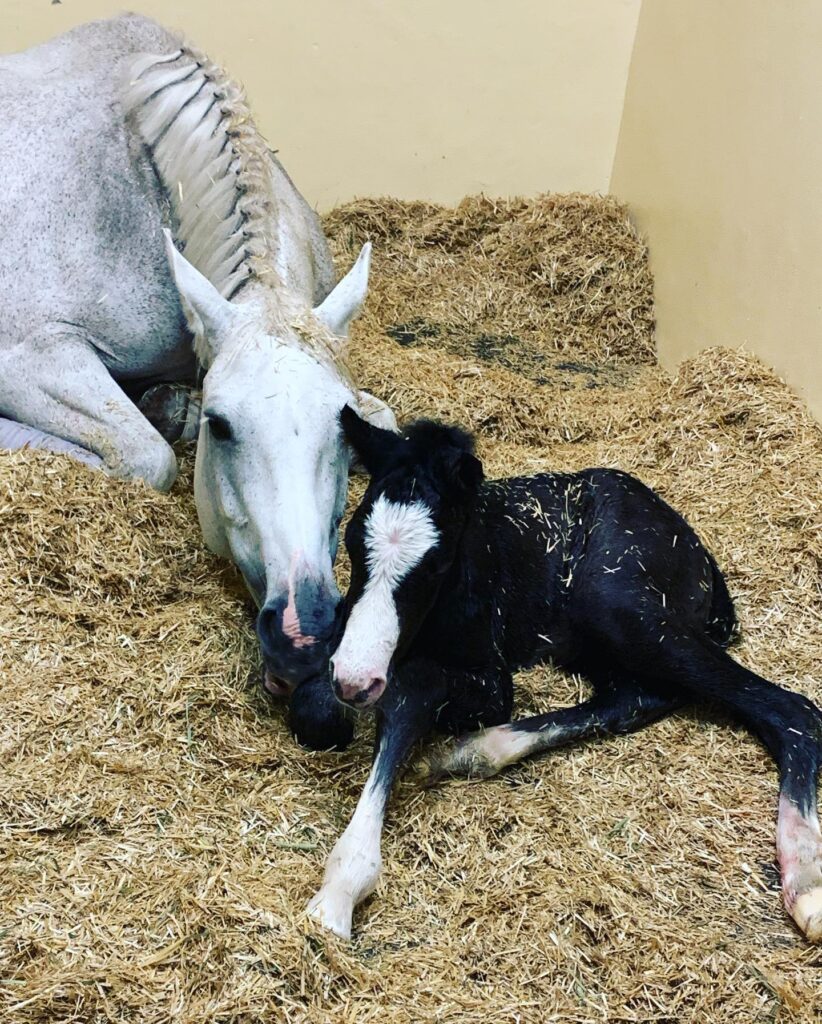
Breeding is not typically on the forefront of owners’ minds when it comes to their high-performance sport horse mare. The focus is mostly on keeping those mares at their best, in terms of health, athleticism, and performance. Prospects for them being bred are usually reserved for well after their competition schedule winds down.
Often when sport horse mares are injured and their careers are either put on hold or cut short altogether, breeding may become the next best option for the owner to consider. Depending on the injury sustained and their overall health and age, breeding can be a great alternative for the out-of-work mare. However, modern reproduction techniques have made breeding the sport horse mare not only an option reserved for after their careers have come to a close. Through embryo transfer, mares can produce multiple foals during the same season all while continuing their training and competition schedules.
With the possibility of breeding comes a significant number of unknowns, so we asked Palm Beach Equine Clinic veterinarian Dr. Katie Atwood to guide us through the process of examining a mares’ reproductive health and the different options for creating a foal.
Start with a vision for the future foal
The first step when embarking on the breeding process is to choose the stallion. This decision hinges entirely on what the owner’s vision and end goal may be for the future foal.
“The owner will need to know what they want that future foal’s purpose to be before choosing a stallion,” Dr. Atwood explained. “Owners should already be in the process of choosing a stallion or have already decided before examining the mare.”
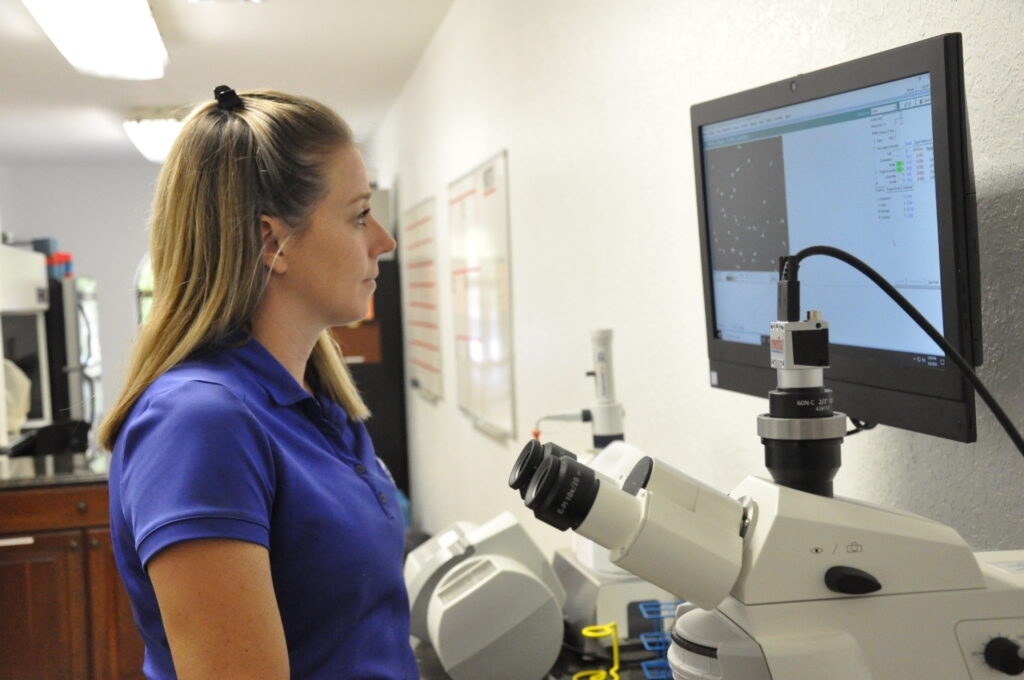
“There are countless breeding stallions across all different breeds and disciplines, and it all comes down to the owner’s opinion and preferences. If I have personally met the stallion, I can comment on their disposition, but I do not make recommendations on one stallion versus another. As the veterinarian, I pay attention to their health and fertility versus the external qualities that do not play a role in reproduction. I let the professionals – owners, riders, and trainers – make those decisions,” said Dr. Atwood.
Evaluating the mare’s reproductive soundness
After assessing the mare’s overall health and taking into account her breeding history, Dr. Atwood will begin with the reproductive soundness exam. This usually includes a rectal ultrasound and palpation of the uterus, ovaries, and cervix. Dr. Atwood also typically performs a vaginal speculum exam to examine the quality of the mare’s cervix. All the information that Dr. Atwood gathers during this step helps to determine what stage the mare is at in her estrous cycle, identify any potential issues, and establish the next steps.
“When performing that first ultrasound, I look for endometrial cysts, fluid or air, and mucus in the uterus,” said Dr. Atwood. “I examine both ovaries to make sure they appear normal and are cycling normally. There are a lot of elements that can change depending on the time of year and where the mare may be in her cycle. But if we are examining her during breeding season, then I can evaluate whether or not there are any abnormalities.”
During the ultrasound, Dr. Atwood will look for signs of Endometritis, an inflammation and infection of the most superficial layer of the uterus and a big reason why mares can’t get pregnant. It is important to identify issues such as this before taking any further steps.
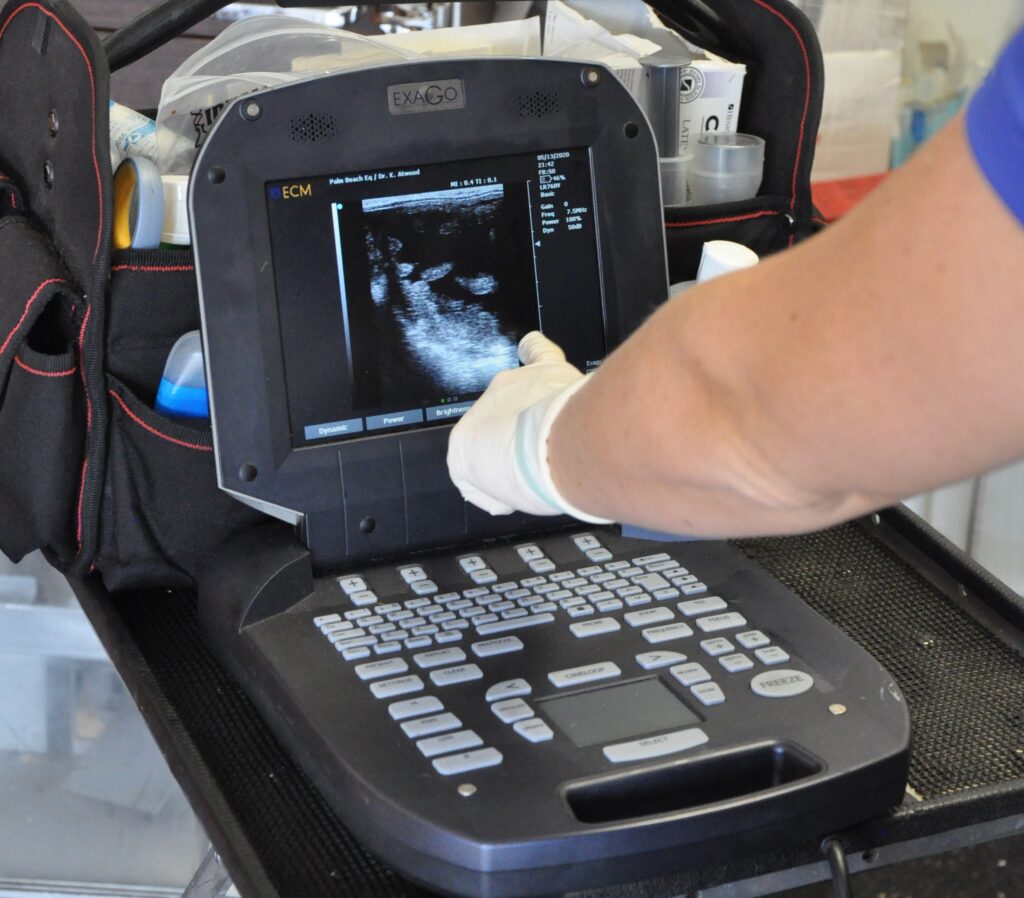

Age can bring about changes to the uterus, as can any previous pregnancies, so a uterine biopsy is also recommended for older mares (generally over 14 years old) before being bred. Some of those changes, such as fibrosis, are irreversible, which is also crucial to know before you proceed further with breeding.
Maiden mares can also have their own challenges if being bred for the first time at a later stage in their life. “When a middle-aged or older mare has not had a foal before, her cervix does not relax. This means that they more easily maintain fluid in their uterus and that can present its own complications,” commented Dr. Atwood. Dr. Atwood also notes that the conformation of the mare’s external genitalia needs to be taken into consideration. If the mare’s anatomy predisposes her to uterine infections, there will likely be complications throughout the pregnancy.
Getting the timing right
Since many sport horses will travel frequently over far distances and through different climates, its important to consider the mare’s natural estrous cycle and her best time for ovulation. “Here in south Florida, a lot of clients will want to breed their horse when they arrive for the winter season,” said Dr. Atwood. “Their mare may have been in New York for the last 8 months, so her uterus is still influx with New York seasons and she is anestrous, meaning that she is not cycling.”
When the mare is in her seasonal anestrous, her uterus is flaccid and her ovaries are not producing follicles. The veterinarian can administer a hormonal therapy to help trigger ovulation, however, Dr. Atwood tries to go the natural route whenever possible. In these situations where the owner wants to breed the mare and are traveling from up north, Dr. Atwood has a simple yet effective trick.
“I usually recommend putting the mare under lights starting in the beginning of December and lasting until they are bred. This is a very simple, economic way we can naturally stimulate the mare to cycle. The mare only needs to be under lights from 4 p.m. until 11 p.m. and the brightness test is that you’ll need to be able to read a newspaper in the darkest corner of the stall,” said Dr. Atwood.
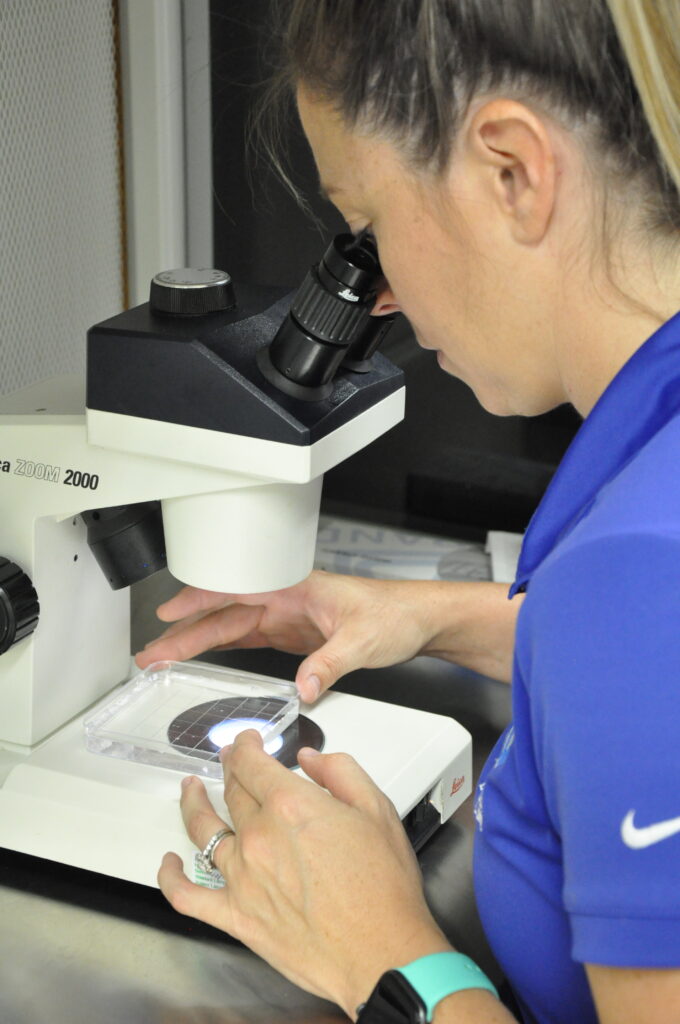
Considering a surrogate mare
Using a surrogate mare is one of the most popular routes for breeding sport horse mares. This process requires an embryo transfer, meaning that an embryo from the donor mare will be transferred to a surrogate, or recipient, mare to carry the foal to term. Embryo transfer has become a leading method for breeding as it relieves many of the owner’s concerns regarding the mare’s health and carrying the foal. It also allows the mare to be bred at an ideal reproductive age without any interruptions to their training and competition schedules.
“The average gestation period for a horse is 11 months and you’re only producing one foal per year with traditional breeding. Embryo transfer allows the mare to produce multiple foals per year while remaining in their normal routine,” commented Dr. Atwood.
What the surrogate mare process entails
Dr. Atwood cautions that a one-to-one ratio is not a good plan for a surrogate mare. In other words, she advises that you do not choose one single mare you’d like to be the surrogate, but rather go through a commercial recipient herd.
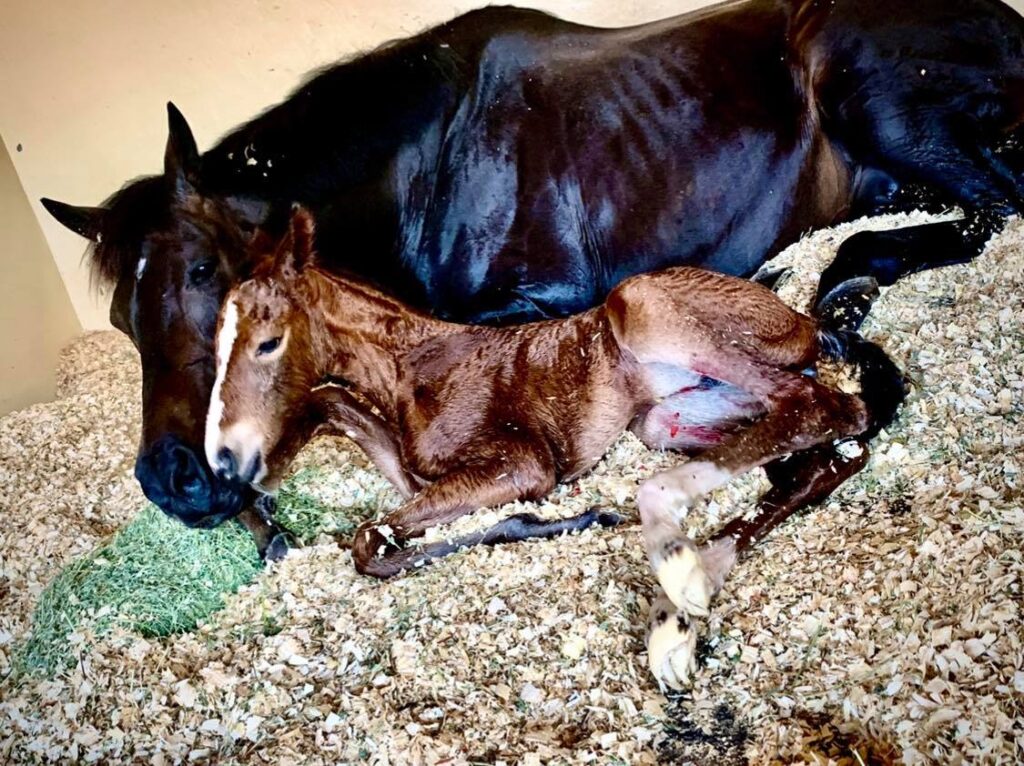
“I advise clients to not just rely on another one of their mares as a surrogate,” said Dr. Atwood. “In a perfect world, I would line up three recipient mares for every donor mare. The donor and recipient mares have to be on the same cycle because if you are going to take an embryo out, you have to put it in a uterus that’s ready for that embryo.”
Though the deposit to reserve a mare in a commercial herd can be costly and often nonrefundable, it guarantees that there will be a mare in the herd on any given day that is ready to receive the embryo. When it comes time for the embryo transfer, the mare whose uterus is the best quality on that day will receive the embryo. Prior to the embryo transfer, the donor mare will still undergo an ultrasound and palpation exam to determine her reproductive health.
Genetically, the recipient mare has no contribution to the genetic makeup of the foal if breeding through embryo transfer. The foal will be with that recipient mare from birth to weanling (six months), so there is a possibility that some of her personality traits could rub off but that is often not the case. “The recipient mare is usually under the age of eight, an appropriate size, and has a nice, calm disposition,” commented Dr. Atwood. “Some owners do have the recipient mare shipped to their personal barn during the last stages of the pregnancy because they want to be part of the foaling process or have their own team and veterinarian there for that process.”
Speak with a veterinarian about your mare’s breeding options
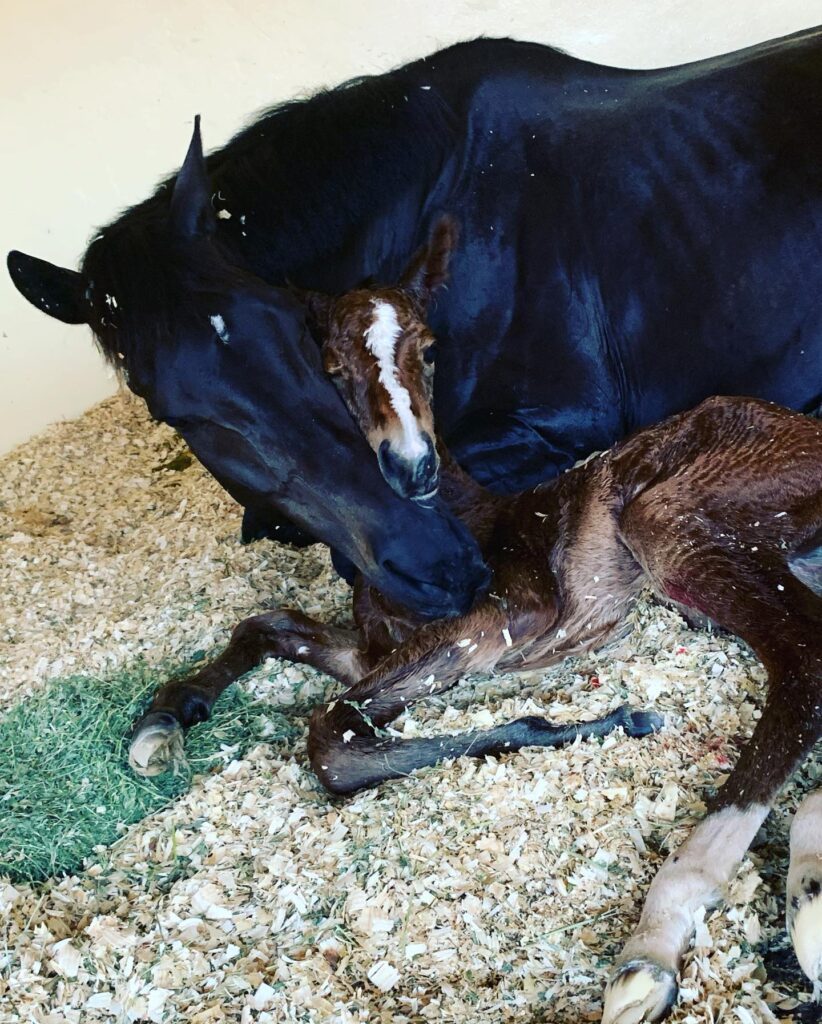
If you are considering breeding your mare, keep in mind the time of year, whether you’d like to use a surrogate, and what you want the final result to be. The breeding process can be a bit overwhelming, especially for those who are new to it, but Palm Beach Equine Clinic veterinarians are here to assist and guide you in the process whenever help is needed. At the end of the day, for Dr. Atwood, the reproductive process is her passion, so she is always eager to meet new patients and help plan for a new foal.
“I love the creation of life,” Dr. Atwood remarked. “Equine medicine is intriguing, but you’re usually handling sick, unhealthy animals. With reproduction, I am working with healthy animals and making their babies, which I love.”